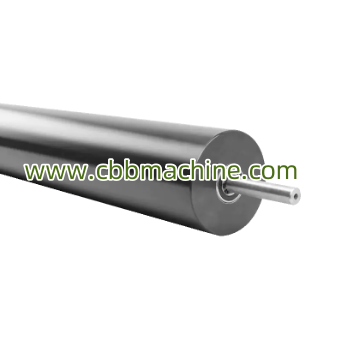Understanding the Role of Aluminum Roller in Modern Manufacturing
The Aluminum Roller is a key component in many industrial and manufacturing processes, playing a vital role in material handling, converting, and processing. From film and foil to textile and paper production, aluminum rollers provide the durability, performance, and stability required for precision-driven operations.
Aluminum is preferred for rollers due to its unique combination of properties. It is lightweight yet structurally strong, allowing for easier handling and reduced strain on machinery. Additionally, aluminum offers excellent corrosion resistance and thermal conductivity, making it suitable for environments where exposure to moisture or heat is common. These attributes ensure a longer service life and lower maintenance requirements, contributing to overall cost efficiency.
In applications that demand high-speed operation, the balance and alignment of rollers are critical. Aluminum rollers can be engineered with high precision, reducing vibration and enhancing the quality of the final product. The uniformity of surface finish also plays an essential role in minimizing material damage and ensuring consistent output.
Manufacturers can choose from a variety of aluminum roller types based on their specific needs. Common variations include idler rollers, guide rollers, and drive rollers. Each type can be customized in terms of diameter, surface treatment, and internal structure to support different levels of tension, pressure, or load. Some rollers are coated to increase surface grip or reduce static, depending on the application.
One of the biggest advantages of using aluminum rollers is their adaptability to various production lines. Whether in printing, laminating, packaging, or extrusion systems, aluminum rollers can be easily integrated without major alterations. Their versatility also allows for fast upgrades or replacements, which is especially valuable in high-volume manufacturing.
Precision machining techniques further enhance the functionality of aluminum rollers. Processes such as dynamic balancing, CNC turning, and surface polishing help deliver a roller that meets tight tolerances and specific design parameters. These improvements translate to smoother operations and reduced wear on connected parts.
Environmental sustainability is another reason aluminum is favored in roller production. It is a recyclable metal, making it a responsible choice for companies looking to reduce their environmental impact. In addition, its lightweight nature contributes to lower energy consumption in machines, supporting greener production efforts.
While aluminum rollers are known for their durability, regular inspection and proper alignment are essential to maintain peak performance. Over time, wear and tear or accumulated debris can affect the roller’s efficiency. Implementing routine maintenance helps extend service life and minimizes the risk of downtime.
As production demands evolve, so does the need for more intelligent and efficient machinery. Aluminum rollers are now being incorporated into systems with advanced sensors and automation features. These integrations allow real-time monitoring of roller temperature, rotation speed, and vibration—helping operators quickly identify issues before they escalate.
In summary, the aluminum roller is more than a simple rotating component—it is a critical part of modern industrial equipment. Its combination of strength, precision, and adaptability makes it suitable for a wide range of applications. With ongoing advancements in design and integration, aluminum rollers continue to be a practical and forward-looking solution for manufacturers worldwide.



